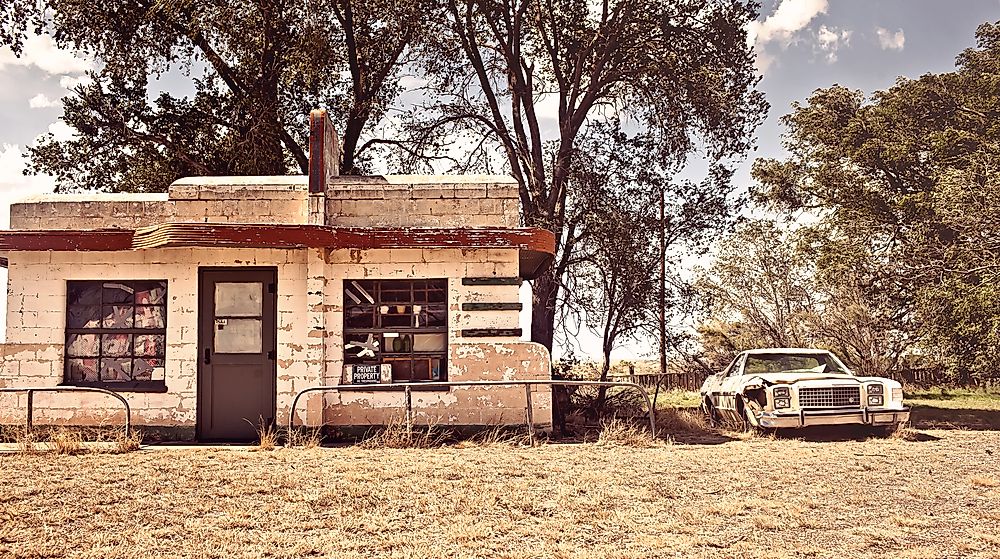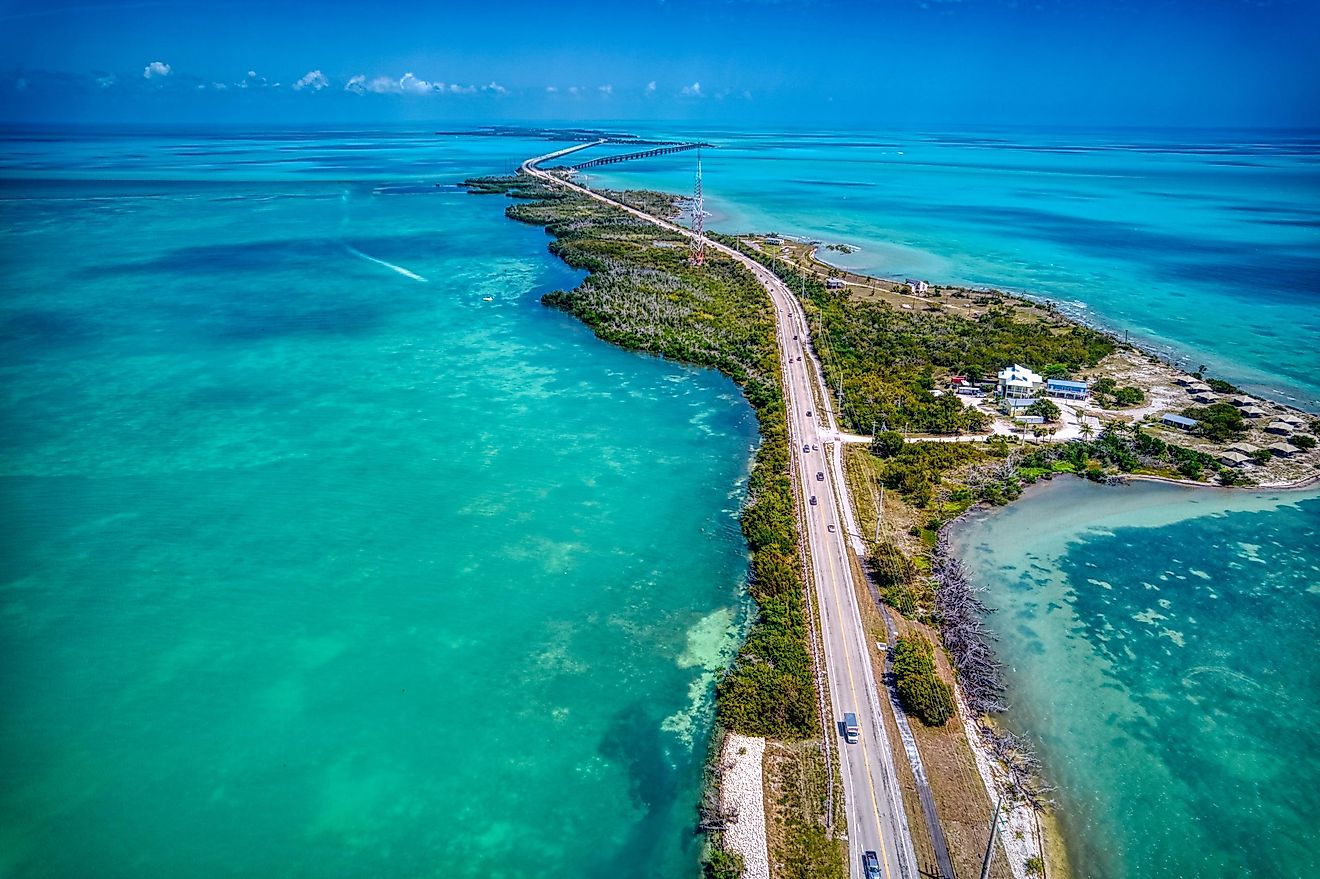Ghost Towns of America: Glenrio, New Mexico and Texas

Located in both the Quay County of the state of New Mexico and the Deaf Smith County of the state of Texas, Glenrio is an unincorporated community in the US, formerly known as Rock Island. Glenrio is a ghost town that sits on the New Mexico/Texas state line found on Route 66. The community comprises of the Glenrio Historic District, which in 2007 was listed on the National Register of Historic Places. Glenrio was established in 1903 on the Rock Island Railroad as a railroad siding. The community’s name was derived from a Scottish word “glen” meaning valley and “rio” the Spanish word meaning river, but it is neither a river nor a valley. Glenrio was once a monument along the boom and bust highway of Route 66, but now it is a forgotten ghost town that is home to the blowing tumbling winds and critters.
Town History
Around 1901, the Chicago, Rock Island, and Pacific Railroad found its way through the area, and about two years later the small town of Glenrio was established. By 1905, the settlement was open to small farmers who lived on plots of land measuring about 0.23 square miles. A year later, the Chicago, Rock Island, and Gulf Railway built a station in the area. Glenrio began to scurry with freight shipments and cattle. At first, the settlement was predominantly populated by big cattle ranches, but as time went by wheat and sorghum were planted on a large portion of the area. The expansion of farming had a great impact on the growth of the area’s population. Despite there being a post office on the New Mexico side of Glenrio, mail arrived at the railroad depot office on the Texas side. Due to the community’s precarious location, the area became the subject of a lengthy battle on tax rights between both states. By 1920, there was a land office, service stations, a hardware store, several grocery stores, cafes, and a hotel in Glenrio. There was even a newspaper known as the Glenrio Tribune which was published between the years of 1910 to 1934. Since Deaf Smith County was a dry county, there were no bars on the Texas side of Glenrio, similarly, the New Mexico side had no service stations because the state had a higher gasoline tax rate. During the community’s thriving years both entrepreneurs and politicians decided that the US needed a national highway system, thus Route 66 was established a decade later. Soon after, the surrounding area became a popular stop over for travelers on Route 66.
From Prospering Town to Ghost Town
Despite its prosperity, the town’s population never grew, and its few residents survived on the tourism based businesses they had established. However, Glenrio suffered a severe blow when the Rock Island Depot was closed, and things went further downhill following the establishment of interstate 40, which by passed the small town. Slowly the town’s small businesses were uprooted and relocated elsewhere until no residents remained in the area.
Present-day Glenrio
At present, Glenrio is only visited by tourists who wish to relive the history of the old Route 66. The area is now home to a collection of dusty buildings that have long been abandoned. The buildings include a post office, an old motel, and a gas station. Glenrio also remains home to the Little Juarez Café which has long been closed. The old main street on Glenrio still remains intact and continuous to old Route 66.











